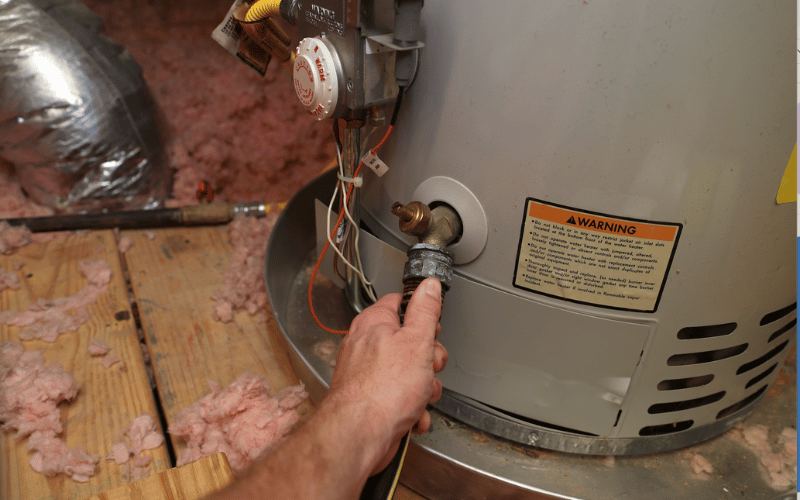Effective Methods to Care for Your Home's Hot Water System SuccessfullyExpert Advice on Caring for Your Home's Hot Water System
Effective Methods to Care for Your Home's Hot Water System SuccessfullyExpert Advice on Caring for Your Home's Hot Water System
Blog Article
We have stumbled upon this article about How to Maintain Your Water Heater & Prolong its Life below on the net and accepted it made sense to share it with you here.

Hot water is necessary for daily comfort, whether it's for a revitalizing shower or washing dishes. To ensure your warm water system runs efficiently and lasts much longer, normal maintenance is crucial. This article supplies sensible suggestions and understandings on just how to maintain your home's warm water system to stay clear of disruptions and expensive fixings.
Intro
Keeping your home's hot water system could seem difficult, yet with a couple of basic actions, you can ensure it runs smoothly for many years to find. This overview covers every little thing from understanding your hot water system to DIY maintenance tips and understanding when to call in expert assistance.
Importance of Maintaining Your Hot Water System
Regular upkeep not only prolongs the life expectancy of your warm water system however additionally guarantees it runs efficiently. Overlooking maintenance can cause reduced effectiveness, higher power costs, and also early failing of the system.
Signs Your Hot Water System Needs Maintenance
Knowing when your warm water system requires focus can protect against significant concerns. Keep an eye out for indicators such as irregular water temperature level, odd sounds from the heating unit, or rusty water.
Understanding Your Hot Water System
Prior to diving right into upkeep jobs, it's handy to comprehend the fundamental elements of your hot water system. Usually, this consists of the water heater itself, pipes, anode rods, and temperature level controls.
Monthly Upkeep Tasks
Routine monthly checks can aid capture minor issues prior to they intensify.
Flushing the Water Heater
Flushing your hot water heater eliminates sediment build-up, enhancing efficiency and lengthening its life.
Monitoring and Replacing Anode Rods
Anode rods protect against deterioration inside the storage tank. Examining and replacing them when broken is crucial.
Checking and Adjusting Temperature Level Setups
Readjusting the temperature level settings guarantees optimal performance and safety and security.
Do It Yourself Tips for Upkeep
You can do a number of maintenance tasks yourself to maintain your warm water system in top condition.
Checking for Leakages
Consistently check pipes and connections for leakages, as these can bring about water damages and higher expenses.
Checking Pressure Alleviation Valves
Checking the pressure relief valve ensures it functions appropriately and prevents too much stress accumulation.
Insulating Pipelines
Protecting hot water pipes decreases heat loss and can conserve energy.
When to Call a Specialist
While DIY upkeep is beneficial, some problems call for professional experience.
Complicated Concerns Requiring Expert Aid
Examples consist of significant leakages, electrical issues, or if your hot water heater is regularly underperforming.
Regular Specialist Maintenance Advantages
Specialist upkeep can consist of comprehensive assessments, tune-ups, and making sure compliance with safety requirements.
Verdict
Regular maintenance of your home's hot water system is important for effectiveness, durability, and price savings. By adhering to these ideas and knowing when to look for professional assistance, you can ensure a reputable supply of warm water without unexpected interruptions.
Water Heater Maintenance Tips
Test the TPR Valve
Shut off the power and the cold-water supply valve. Place a bucket under the pipe connected to the temperature-pressure-release (TPR) valve on the top or side of the tank. (This valve opens if the tank pressure gets too high.) Lift the valve’s tab to let some water out, then let go. If water keeps flowing, drain the tank partway, unscrew the old valve with a pipe wrench, and install a new one. Check the Anode Rod
Put a hose to the tank’s drain cock and let out a few gallons of water. Now fit a 1 1/16-inch socket onto the rod’s hex head on top of the heater (or under its top plate) and unscrew the rod. If it’s less than ½ inch thick or coated with calcium, buy a new one, wrap its threads with Teflon tape, put it back in the tank, and tighten securely. Use this segmented rod if headroom above the tank is limited. Drain the Tank and Wash Out Sediment
Drain the remaining water in the tank into the bucket, then stir up the sediment on the tank’s bottom by briefly opening the cold-water supply valve. Drain and repeat until clean water comes out of the hose. Close the drain cock, refill the tank, and turn its power back on. Adjust the Temperature
Find the temperature dial on the side of the tank and unscrew its cover. Adjust the dial to 120 degrees using a flathead screwdriver. For every 10 degrees the temperature is lowered, you can expect to save up to 5 percent in energy costs. Turn the water heater off or the thermostat down to its lowest setting if you plan to be away from home for more than three days. Insulate the Pipes
Buy some self-sticking 3/8-inch-thick foam pipe insulation that matches the pipes’ diameter. Slide the foam over the hot-and cold-water pipes as far as you can reach. Insulating the cold-water pipe prevents condensation in summer. Peel the tape and squeeze the insulation closed. If the pipe is 6 inches or less from the flue, cover it with 1-inch-thick unfaced fiberglass pipe wrap. https://www.thisoldhouse.com/plumbing/21016402/how-to-maintain-a-water-heater

As a person who reads about How to Maintain Your Water Heater & Prolong its Life, I was thinking sharing that chunk was worthwhile. Sharing is caring. Who knows, you may very well be doing someone a favor. I recognize the value of reading our article about Tips For Maintaining Your Hot Water Heater.
Or Book Technician Here Report this page